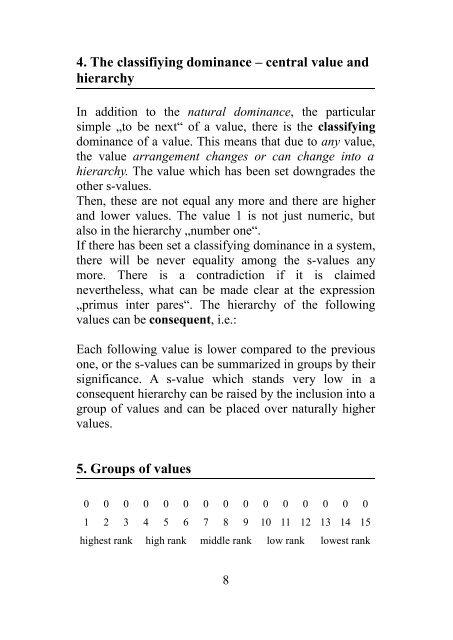Part I - David Greve
Part I - David Greve
Part I - David Greve
Create successful ePaper yourself
Turn your PDF publications into a flip-book with our unique Google optimized e-Paper software.
4. The classifiying dominance – central value and<br />
hierarchy<br />
In addition to the natural dominance, the particular<br />
simple „to be next“ of a value, there is the classifying<br />
dominance of a value. This means that due to any value,<br />
the value arrangement changes or can change into a<br />
hierarchy. The value which has been set downgrades the<br />
other s-values.<br />
Then, these are not equal any more and there are higher<br />
and lower values. The value 1 is not just numeric, but<br />
also in the hierarchy „number one“.<br />
If there has been set a classifying dominance in a system,<br />
there will be never equality among the s-values any<br />
more. There is a contradiction if it is claimed<br />
nevertheless, what can be made clear at the expression<br />
„primus inter pares“. The hierarchy of the following<br />
values can be consequent, i.e.:<br />
Each following value is lower compared to the previous<br />
one, or the s-values can be summarized in groups by their<br />
significance. A s-value which stands very low in a<br />
consequent hierarchy can be raised by the inclusion into a<br />
group of values and can be placed over naturally higher<br />
values.<br />
5. Groups of values<br />
0 0 0 0 0 0 0 0 0 0 0 0 0 0 0<br />
1 2 3 4 5 6 7 8 9 10 11 12 13 14 15<br />
highest rank high rank middle rank low rank lowest rank<br />
8


